The third-generation Mazda CX-5 has been revealed and it’s coming to Australia in 2026, bringing a familiar yet more modern design inside and out, and a familiar engine under the bonnet.
CarExpert understands the new CX-5 will launch here during the second half of 2026.
It will launch here with a carryover naturally aspirated 2.5-litre four-cylinder engine producing 132kW of power and 242Nm of torque, the same engine that’ll be used in the North American market.
Hundreds of new car deals are available through CarExpert right now. Get the experts on your side and score a great deal. Browse now.
It’s mated with a six-speed automatic transmission, with all-wheel drive standard… at least at first.
Sadly, the punchy 170kW/420Nm 2.5-litre turbo-petrol engine has been axed globally.
Mazda Australia has confirmed we’ll get the first hybrid CX-5, finally giving the Japanese brand a rival to the top-selling Toyota RAV4 Hybrid.
Timing for the CX-5 Hybrid, which is set to use Mazda’s new Skyactiv-Z engine and an in-house hybrid system, is yet to be announced as it will be revealed at a later date.
However, Mazda in North America has confirmed it’ll launch there in 2027.
Mazda Australia uses words like “proven” and “reliable” to describe the carryover four-cylinder engine, which it says it has recalibrated for greater flexibility, more responsiveness, and a “more relaxed, quiet demeanour”.
However, it has lost 8kW and 10Nm in the process. Nevertheless, it’s more powerful than the 2.5-litre ‘eSkyactiv-G’ engine that’ll be offered in the European-market CX-5, which produces 104kW and 238Nm but features a 24V mild-hybrid system.
At 4690mm long, 1860mm wide and 1695mm tall, the new CX-5 is 115mm longer, 15mm wider than the outgoing model.
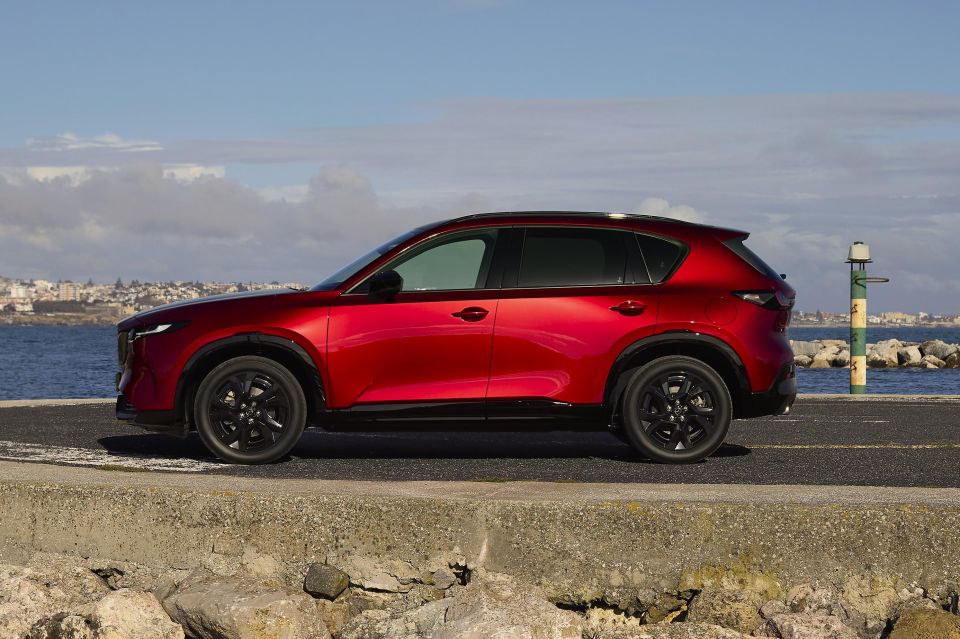
It also rides on a wheelbase that’s 115mm longer at 2815mm, and continues to incorporate MacPherson strut front and multi-link rear suspension.
The door openings are larger for easier access, rear-seat passenger space is claimed to have been increased, and the cargo area is now almost 50mm longer with an 18mm lower load height.
The exterior styling makes the new-generation model instantly recognisable as a CX-5.
While the silhouette is familiar, there’s sharper detailing front and rear. Up front, there are still slim headlights and a crest-shaped grille, but Mazda says it has given the CX-5 a “more chiselled, wider-set look”.
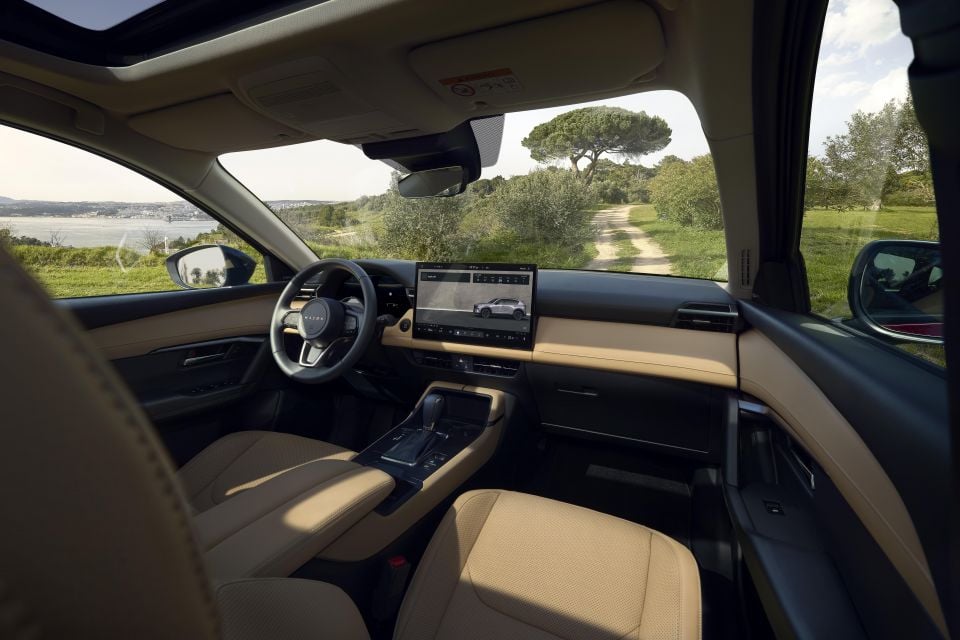
Down back, more angular tail-lights tie the CX-5 in with recently launched Mazda SUVs such as the CX-70 and CX-90.
The interior is arguably a greater departure from the outgoing car than the exterior.
There’s a hint of Mazda’s new electric 6e inside, with a huge landscape-oriented infotainment touchscreen. But the CX-5’s is even larger at 15.6 inches, making it Mazda’s largest yet and considerably more expansive than the outgoing model’s 10.25-inch unit.
The outgoing CX-5 already had quite a minimalist centre stack, but it still had physical climate controls. Those are now almost all gone – most appear to now be anchored at the bottom of the touchscreen, though physical switches remain for the demister.
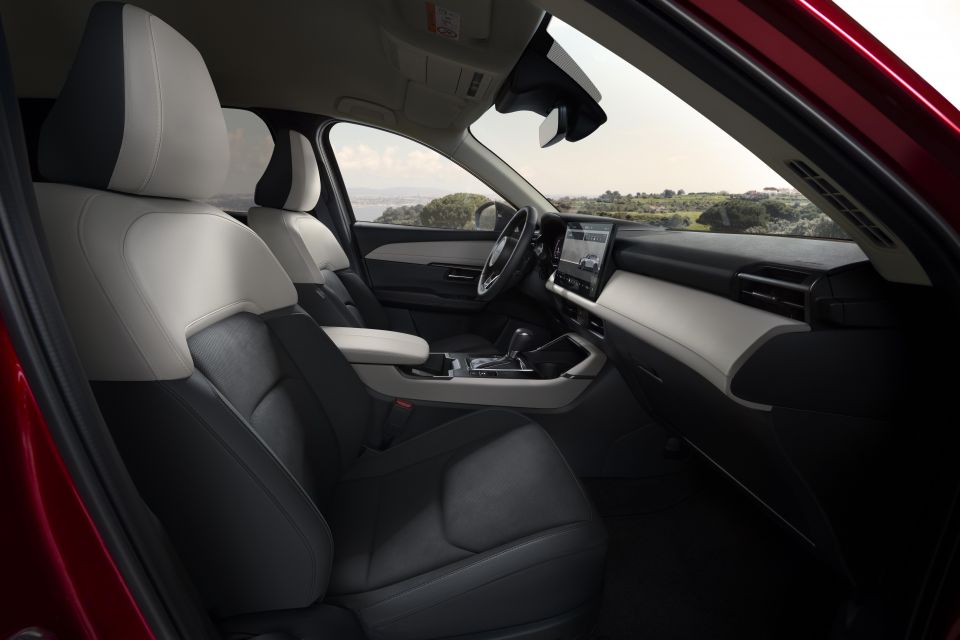
The infotainment screen also features a customisable home screen, allowing for quick access to frequently used features.
A fully digital instrument cluster – like that in Mazda’s larger SUVs – is visible in European-market imagery, while the new steering wheel has dropped Mazda’s logo for a wordmark instead.
Ambient lighting is available, while Mazda has shown off both tan and two-tone grey/black interior colourways and a panoramic sunroof that replaces the dated single-pane unit of the outgoing model.
Carryover interior elements appear to be limited to the gear shifter and the start button.
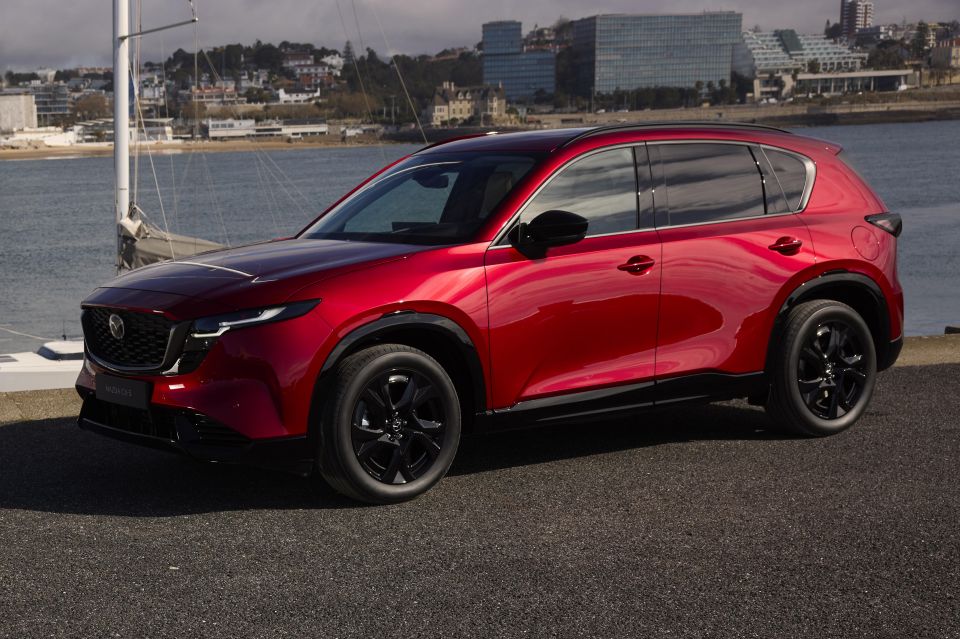
Mazda has promised “several” new ADAS (advanced driver assistance system) features, though it hasn’t specified which. Imagery shows a driver attention monitoring system in the cabin, however.
Ahead of the new CX-5’s local launch, Mazda Australia has promised healthy supply of the existing model.
The first CX-5 entered production in 2012, and Mazda’s mid-size SUV has been a huge seller in Australia with over 316,000 delivered here since launch – and over 4.5 million globally across over 100 countries.
It was the best-selling SUV in Australia from 2013 to 2019, and in 2022 it reached a height of 27,062 sales.
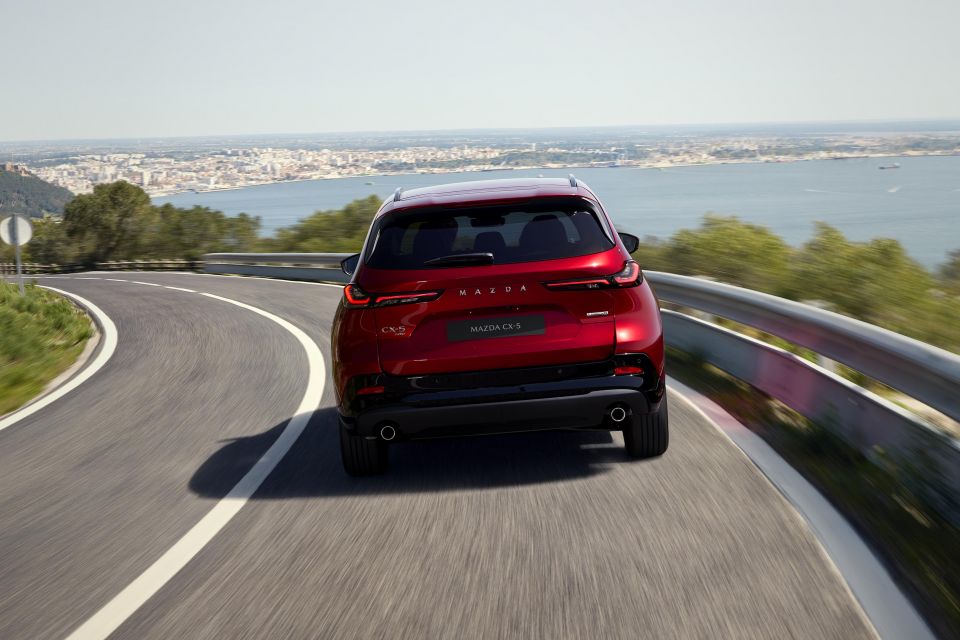
Though it has been overtaken by the Toyota RAV4 in sales, it has consistently remained one of the top three best-selling vehicles in its segment for 13 years.
The CX-5 has managed this without offering any form of electrification, at least in Australia, even as hybrid powertrains have rapidly proliferated throughout the mid-size SUV segment in recent years.
While the outgoing CX-5 (pictured below) has offered a mild-hybrid powertrain in Europe, it hasn’t come here, and Mazda hasn’t had a hybrid to match rivals like the RAV4 or a plug-in hybrid to match rivals like the Mitsubishi Outlander.
The new CX-5 will not only have to fend off rivals like a new-generation RAV4 (due next year), a new Subaru Forester (coming soon) and a refreshed Outlander (here now), but also in-house competition from the similarly sized CX-60.
Mazda Australia is continuing to extend the CX-60 lineup downwards, adding a new base Pure trim this year and announcing the familiar naturally aspirated 2.5-litre four-cylinder engine as the new base engine.
The CX-60 2.5-litre is due here later this year, set to offer a base price below the $50,240 before on-roads sticker of the G40e Pure.
For context, the outgoing CX-5 range is priced from $36,740 before on-roads for the front-wheel drive 2.0-litre G20 Maxx, topping out at $55,150 before on-roads for the turbocharged all-wheel drive G35 Akera.
MORE: Explore the Mazda CX-5 showroom